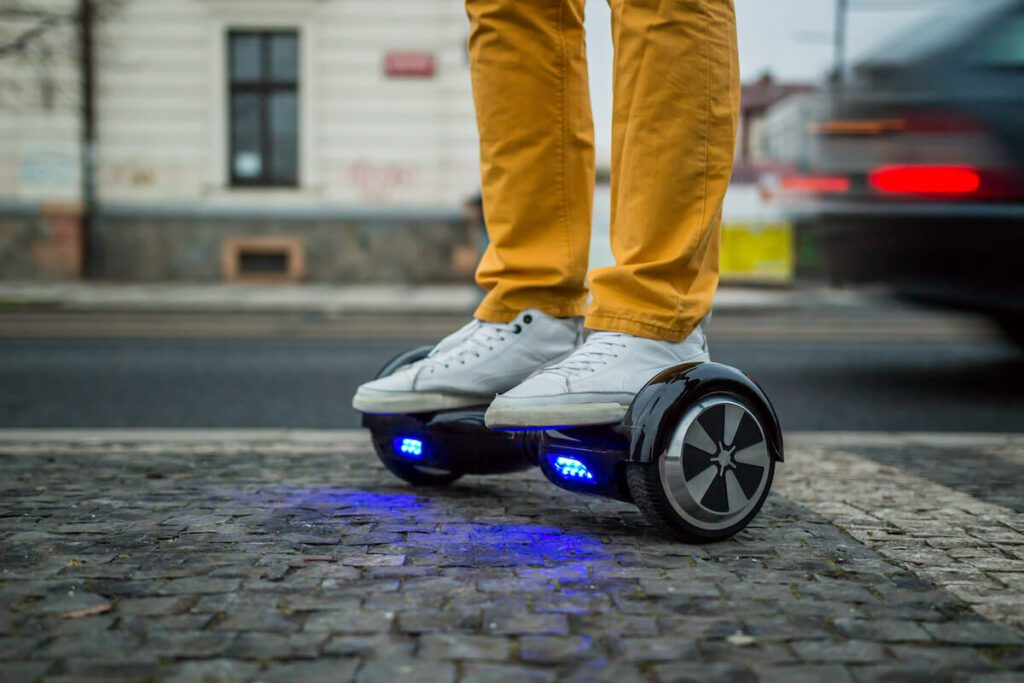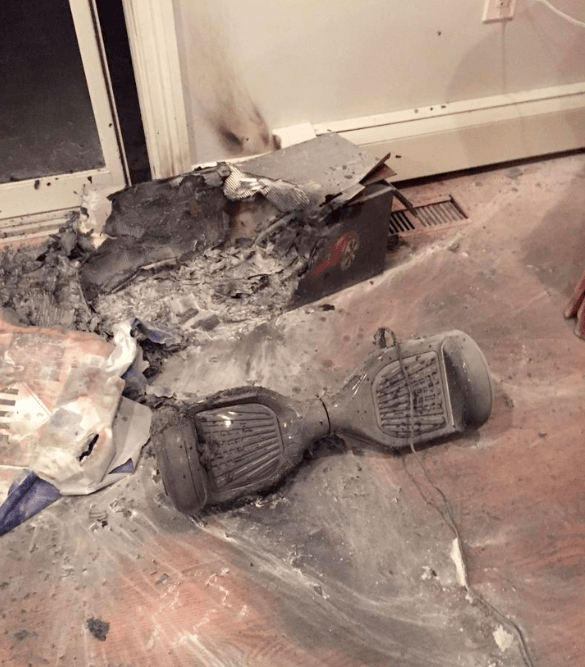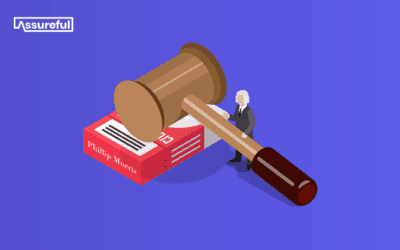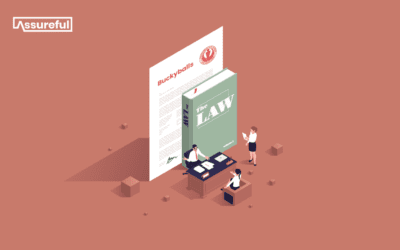In 2015, the world was swept up in a hoverboard craze, and the novel, self-balancing boards quickly became the must-have gift of the holiday season.
But the buzz around this novelty quickly wore off when reports began to surface of hoverboards spontaneously combusting, with some even blowing up under Christmas trees.
In this article, we’ll look closer at the hoverboard craze, what really caused the fires, and the lessons we can take from the safety standards and regulations that followed.

What Caused the Fires That Nearly Ruined Christmas?
The fires associated with hoverboards aren’t due to some mysterious or complex phenomenon. They’re the result of simple, well-understood science – the lithium-ion batteries that power the devices.
While these generally safe batteries are used in many of our everyday devices like smartphones, they can pose significant safety risks if not properly managed.
The problem lies in the fact that lithium-ion batteries contain a highly flammable liquid electrolyte. If the battery is damaged or defective, it can short-circuit, overheat, and potentially cause a fire.
Battery fires aren’t as uncommon as we’d all hope and have prompted even the most trusted household brands to recall their products in the past. Dell once had to recall 4 million laptop batteries due to overheating risks and a Boeing 787 Dreamliner was once grounded due to similar concerns.
In the case of hoverboards, fires have been reported under all kinds of conditions: charging, riding, and even when the device wasn’t in use. The major problem with this lack of commonality between the fires? It indicates that there was no single identifiable cause or isolated manufacturing defect, but rather a systemic issue with the technology itself.

The Fire Crisis Unfolds: Stats That Surpass the 2015 Craze
As the hoverboard craze continued, so did the alarming reports of fires. In December 2015, the US Consumer Product Safety Commission (CPSC) reported 12 incidents of hoverboard fires that caused significant damage to homes and bedrooms. But the situation didn’t stop there.
In July 2016, just 7 months later, the CPSC updated their reports to include at least 60 incidents of hoverboard fires, resulting in over $2 million in property damage – and a staggering recall of half a million products due to fire risk.
And it continued!
Six years on, the CPSC was still receiving reports of electric scooters, e-bikes, and other so-called micro-mobility products overheating or bursting into flames – with at least 208 reports between January 2021 and November 2022.
The result was at least 19 deaths, including five related to e-scooters, 11 with hoverboards, and three connected to e-bikes.
These alarming statistics highlight the potential risks associated with manufacturers jumping on new technology trends and the trust that customers place in sellers to supply them with safe products.
For sellers, no example could make it more clear how essential comprehensive insurance coverage is in the event of situations like this – to both protect your brand and fairly compensate your customers.
The Challenge of Identifying Safe Products
One of the main challenges in the hoverboard craze was identifying which products were safe, and which weren’t – especially since, at the time, there were no safety standards for this product.
The majority of hoverboards on the market were produced in Chinese factories and resold by hundreds if not thousands of sellers, making it difficult to trace the hoverboard problem back to any specific manufacturer or model. This created a huge challenge for consumers, sellers, and regulators.

Importers and sellers were relying on individual component certifications, which didn’t guarantee the safety of the whole product – clearly.
This is an important reminder for any eCommerce sellers – when any specific safety standards are absent, it’s crucial to take extra precautions to ensure the safety of your products.
Those extra precautions could include:
- Additional testing
- Extra quality control measures
- Working closely with manufacturers to address potential safety issues
Navigating Safety Standards: The Response of Regulators
In response to the crisis, regulators introduced the UL 2272 safety standard that evaluates the safety of hoverboards by testing their electrical, mechanical, environmental, and material components.
The first hoverboard model to receive UL 2272 certification was the N3M320 manufactured by Ninebot, the parent company of Segway, and several others followed suit.
Fire departments and safety agencies also offered advice to the public on how to minimize fire risks including:
- Allowing devices to cool off before charging
- Never leaving a hoverboard unattended while charging
- Never charging overnight
- Choosing a product with proper certification (once this was available)
However, these measures aren’t foolproof and don’t tackle the issue at its core – so the incidents keep happening.
Even with regulations, the responsibility of ensuring product safety ultimately falls on the sellers.
As an eCommerce entrepreneur, it’s crucial to understand the products you sell, the associated risks, and the regulatory landscape, to be proactive about ensuring the safety of your products and protecting your business.
Check out these cases that have shaped product liability over the years:
- Buckyballs
- The McDonald’s hot coffee lawsuit
- 3 famous product liability lawsuits
- Bullock v. Phillip Morris
- NBA Star Francisco Garcia vs Ledraplastic

The Importance of Product Liability Insurance for eCommerce Entrepreneurs
The hoverboard fire incidents serve as a stark reminder of the potential risks associated with selling products online. They underscore how important comprehensive product liability insurance is – no matter how much or little risk you perceive your products to have, or how quickly you’re capitalizing on a trend.
This type of insurance will protect your business in the event that your product causes damage, whether it’s a minor allergic reaction or a serious home fire.
Ready to Protect Your eCommerce Business?
When you’re capitalizing on product trends, you need assurance that your business is well protected – and fast.
Assureful’s real-time, sales-based insurance model is designed specifically for the dynamic eCommerce environment. Our policies instantly scale and adjust based on your actual sales and product mix, ensuring you’re always covered, no matter what unexpected challenges your products may present or overnight trends take hold of the market.
Our product liability insurance provides coverage for:
- Legal fees: If a product you sell causes harm and you’re sued, our policy covers the legal fees associated with defending your business
- Settlements: If a lawsuit results in a settlement, our policy can cover the settlement amount
- Medical costs: If a product you sell causes injury, our policy can cover the medical costs associated with the injury
Don’t wait for a crisis to strike. Take proactive measures to protect your business today.
No obligation quote.
Policies can be canceled at any time, with 30 days’ notice.




0 Comments